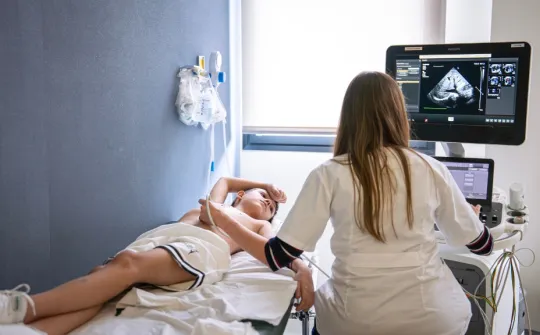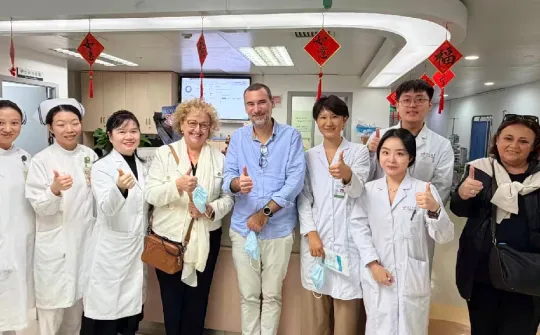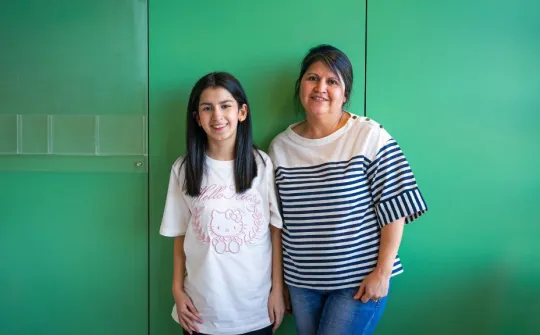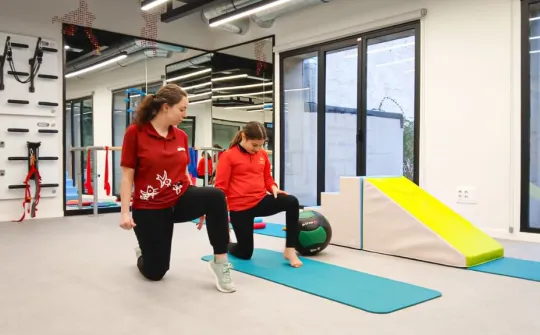“After countless journeys abroad, we have found that what makes us different is not only our standard of excellence, but also our compassion”
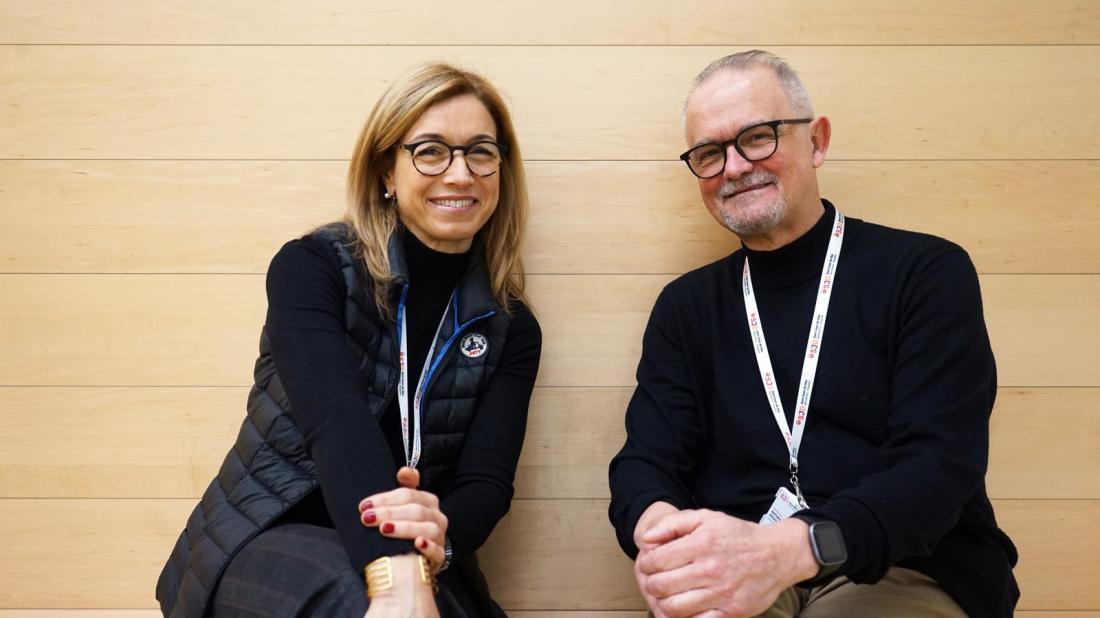
Both the ex-director and the current director of the International Patients Department, Antoni Arias and Patricia Montealegre, look back on the last 10 years of international service offered by the SJD Barcelona Children’s Hospital.
The SJD Barcelona Children's Hospital started its internationalisation efforts in 2013. Since then, the number of international patients attended to in the Hospital has increased by 17% each year on average, reaching 882 children and teenagers from 83 different countries in 2022. In just ten years, the International Patients Department has gone from a team of seven to a 47-person-strong group, made up of case and patient managers, administrative, management and finance staff, and in-house ward and consultation teams. We spoke to the one responsible for the department in its first decade, Antoni Arias (currently Senior Assistant), and the current director, Patricia Montealegre, to look back at the centre’s progress in international healthcare provision over the last ten years.
What was the situation like when this department first started?
Antoni Arias (AA): In the beginning stages there were several strategic elements at play. The long-term plan was the Paidhos programme, a strategy launched in 2005 with the goal of increasing the collective knowledge and expertise of the Hospital as a national and European role model, improving how we handled and provided care in rare disease cases. In 2010, however, this was heavily impacted by the economic crisis, and the subsequent loss of 20 million Euros’ worth of income. These so-called “cutbacks”, alongside a notable dip in birth rates, led us to setting our gaze further afield.
To come up with a plan of action, several members of management visited leading international healthcare centres. Through these visits, the management team of the SJD Barcelona Children's Hospital realised that the Hospital could become a key international provider in pediatric healthcare. We started working on the idea in 2012, and a year later, we were in the process of setting up the department and getting the first promotional materials ready.
Since then, things have not stopped. What impact has this had on the team and on the Hospital itself?
AA: To give you an idea, in 2012 we had treated 48 international patients (albeit in a non-structured way, mainly in the form of charitable acts or contacts of other doctors) and in 2022, we’ve managed to treat over 800 patients. We slowly brought on more staff members who spoke various languages, starting with patients in Eastern Europe and Russia, and we’ve been expanding our team's linguistic offering little by little. The challenge, as we took on more patients, was offering the best service possible. That's why, in 2020, the current department director took office.
Patricia Montealegre (PM): I joined the team a few days before the first COVID lockdown. At the time, our main goal was to better organise a fast-growing department, tidy up procedures and protocols and ensure quality service. Then the pandemic happened, and while most people stayed at home, we very quickly went back to receiving patients from abroad who had travelled despite all of the air travel restrictions. Families never stopped trying to find solutions for their children. We adapted to the pandemic: we created new protocols and set up all kinds of agreements with governments and embassies so that our patients could travel here. At that time we also started documenting several protocols and procedures and started looking for potential areas for improvement. Thanks to the hard work of the entire team, what we ended up with was a complete plan of action which was then implemented.
How did the pandemic affect the growth of this department?
AA: In hindsight, aside from being a huge challenge, it was an opportunity. Hospital management, who clearly support international engagement, decided against layoffs, choosing to keep on all staff despite the reduced workflow, which normalised again after a year. We made good use of this short lull to train all team members on multiculturalism, improve remote healthcare provision, and perform a comprehensive review of patients’ situations so we could help them get here. We learned more than we ever had before about airport permits, visas, and managing client consultations, as well as all kinds of cultural, clinical and administrative aspects.
There was also a huge crisis when Donald Trump became US President, as the sanctions imposed on the Venezuelan government made it hard for us to work with the Simón Bolívar Foundation, who would refer many Latin American patients to us. Another more delicate event of the last ten years, in this case, more recently, has been the war in Ukraine, which has led to a decline in patients from Eastern Europe and former Soviet Union member states.
Is it easy for international patients to access the SJD Barcelona Children's Hospital?
PM: It does not have to be difficult. On a logistical and medical level, children and families are given as much support as possible so they can come to Barcelona. Economically-speaking, the department has secured deals with third-parties (foundations, governments, donations, etc.) to pay for 70% of treatment costs for international patients. This is an integral part of the culture of our Hospital, because, as a non-profit organisation, our priority is attending to patients in the best way possible, regardless of their economic or financial situation. When they arrive, they are also offered any emotional or practical support they might need.
How has international healthcare transformed, or continued to transform the Hospital?
AA: One of our team members joked one day that certain parts of the hospital were like being at the UN or the Tower of Babel. The Hospital is much more diverse now, and teams are more motivated and invested in caring for these patients. This is a huge challenge given all of the linguistic and cultural differences, which are retained thanks to the joint efforts of our staff. From an organisational point of view, it has contributed to higher quality care and a reassessment of less-than-optimal areas.
PM: For example, the Day Hospital has improved, so has data security in patient identification processes, and also drug administration. There is also closer coordination between international patient care teams and the wider care team, who have seen this influx of patients from all over the world as a possibility to learn and treat more people. At the same time, both interpreters and administrative staff have learned how to transmit medical information, while being aware of not just cultural diversity and the socioeconomic position of families, but also the most common questions that are asked. A simple, but very clear example would be that in the cafeteria, when I first arrived, nobody greeted you and the menu was not even available in other languages. Now, not only is the menu in a variety of languages, but it also has halal food options, creating a much more culturally-sensitive experience for patients from all over the world.
It seems to have had a positive impact overall.
AA: Absolutely. After more than 63 journeys abroad over the years, we have realised that what makes us different is not only our standard of excellence, but also the compassion we show. On one occasion, when we asked why patients were referred to us in Barcelona, we were told it was because we treated our patients with the utmost respect. Good treatment is not only medical, it is also feeling welcomed, informed and respected.
PM: That is the added value we offer: care and patient experience. An international insurer asked us once how we had managed to implement this model, what our secret to success was. What is certain is that it is something in the Hospital's DNA. It makes it go above and beyond its role as a service provider to actually how the child or teenager and their family are treated. This is also looked into by the patient experience team and the process management team, whose job it is to continuously make objective improvements to our care offering.
AA: There’s a written testimonial from the year 1572 that talks about how the needy were cared for. In its closing statement it really sums up where we come from: “The Brothers of the Order of Saint John of God welcomed everyone with open arms without exception—poor, foreign or outsiders, curable or incurable, of troubled or healthy mind, children and orphans. They did this in the name of their founder, Saint John of God. They welcomed everyone, both the Moriscos and the Old Christians.”
